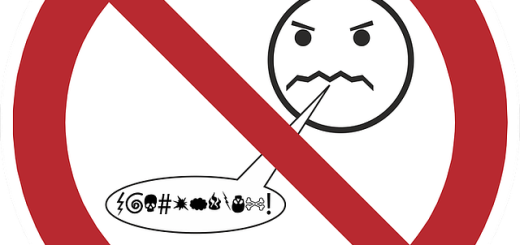Brain Rattling Content Ideas for The Completely Clueless
 Twelve months ago, I had a content crisis.
Twelve months ago, I had a content crisis.
I’ve been doing online marketing for more years than I can count, and I finally ran smack dab out of ideas.
It was that moment that everyone eventually reaches when you think that there isn’t one more thing you can write about, talk about or teach that you haven’t already done, or that someone else has done better than you ever could.
For a week I stared at my computer, trying to think of something to write about.
And that’s when I realized I needed a list that I could turn to at any time that would jar me into action – a list of content ideas that would rattle my brain and shake loose some good ideas I could immediately use to create great content.
I immediately started building my content idea list, and I keep it posted next to my computer. Now whenever I’m stuck for an idea, I choose one of these and then start brainstorming ideas.
For example, under #1 below you see, “Provide tips.” If I choose this one, then I make a list of 20 or 30 ideas on what kinds of tips I’m going to do, and then I choose one of those to start creating blogposts, videos, podcasts and more.
Ever since I compiled this list, I have NEVER been stuck for content ideas. Hopefully it can help you as much as it’s helped me.
1: Educational Blog Posts/Articles – Create informative blog posts or articles related to your product. Address common questions, provide tips, tutorials, and industry insights. This positions your brand as an authority in the field and attracts organic traffic from search engines.
2: Video Tutorials and How-To’s – Make videos demonstrating how to use your product, solve problems, or achieve certain goals. This engages your audience visually and helps them understand the benefits of your product.
3: User-generated Content Campaigns – Find ways to encourage customers to share their experiences with your product through photos, videos, or written testimonials. Repost this content on your website and social media to showcase real-life use cases.
4: Social Media Contests and Giveaways – Create contests that require participants to engage with your brand by sharing, liking, commenting, or creating content related to your product. Offer a prize, such as your product or a discount, to incentivize participation.
5: Influencer Collaborations – Partner with relevant influencers who align with your product’s target audience. They can create authentic content, reviews, or tutorials to reach a wider audience.
6: Behind-the-Scenes Content – Share glimpses of your product’s creation process, day-to-day operations, and the people behind your brand. This humanizes your business and fosters a deeper connection with your audience.
7: Multi-Purpose Emails – Write an email to your list, then use excerpts on social media and post the email as a blogpost. Your newsletters should be seen by more people than just your email list. Write about product updates, make special offers, cover the news, add some humor and always give valuable content. Just going through old emails gives me a ton of new content ideas, and creating new emails knowing I’m going to repurpose them gives me added incentive to make them truly great.
8: Interactive Quizzes and Polls – Create interactive quizzes or polls related to your product’s benefits or the problems it solves. This engages your audience and provides valuable insights into their preferences. You can get really creative and even a bit silly with your quizzes and your audience will love it.
9: Live Webinars or Q&A Sessions – Host live sessions where you discuss industry trends, answer audience questions, or showcase the features of your product. This creates a sense of community and fosters engagement. If you don’t have a webinar, start working on one. If you’ve never held a Q&A, try a live Q&A on your favorite social media channel and don’t just answer questions, ask them. Ask your audience what content they want to see right now. What problem can you solve for them? What mystery can you shed light on? What are they having trouble finding?
10: Product Comparison Guides – Create comparison content that positions your product against competitors, highlighting its unique advantages. This helps customers make informed decisions. Don’t forget to compare your product to something silly and irrelevant, such as a pickle. Seriously, try it.
11: Customer Case Studies – Showcase success stories of customers who have benefited from your product. Detail their challenges, how your product helped them, and the outcomes they achieved. Above all else, make the customer the hero of the story, not your product. Your product is simply the vehicle, whereas the customer is the star.
12: Podcasts or Audio Content – Start a podcast discussing topics related to your industry and product. This can help you reach an audience that prefers consuming content through audio platforms. Carry a notebook with you for a week and jot down every single crazy hair-brained idea you get for a podcast topic. Yes, a notebook. There’s something about actually writing with pen and paper that gets the subconscious juices flowing.
13: E-books and Whitepapers – Offer in-depth guides or educational resources related to your product’s niche. Collect email addresses in exchange for these resources to build your subscriber list. If you don’t like writing ebooks and whitepapers, outsource. You come up with a great topic, and someone else gets to do all the work.
14: Interactive Product Demos – Create interactive product demos that allow users to explore the features and benefits firsthand. This can be especially effective for complex products. Is interactive too complicated? Make videos showing yourself or maybe your teenager using the product.
15: Seasonal and Holiday Promotions – Tailor your content and campaigns to match different seasons, holidays, or events. Offer special deals and themed content to capture the spirit of the occasion. Did you know that every single day of the year has at least two holidays if not several? There’s cupcake day, Twinkie day, rattlesnake day, blue moon day, utopia day, kiss your honey day and so forth. I made one of those up but I’m not telling you which one it is, because frankly you can also make up any holiday you like.
As always, the key to successful online marketing is understanding your target audience, their preferences, and where they spend their time online. This will help you tailor your content to effectively reach and engage with them.
The other key is, in my opinion, to not take yourself too seriously and to just have fun with it, because if you’re enjoying creating the content, odds are your audience will fall in love with it.

Author offers a FREE copy of this book to his next door neighbor... to prove he's not a drug dealer!
Now claim your FREE COPY.
and follow the step-by-step instructions for making the kind of money (and living the kind of lifestyle) that'll get your neighbors curtains twitching with curiosity!
Enter your details below to discover how to claim your FREE COPY of 'Six Figures A Year In Info Publishing' ...
Privacy Policy : We value your privacy. You can unsubscribe from receiving future emails with 1 click at any time.























